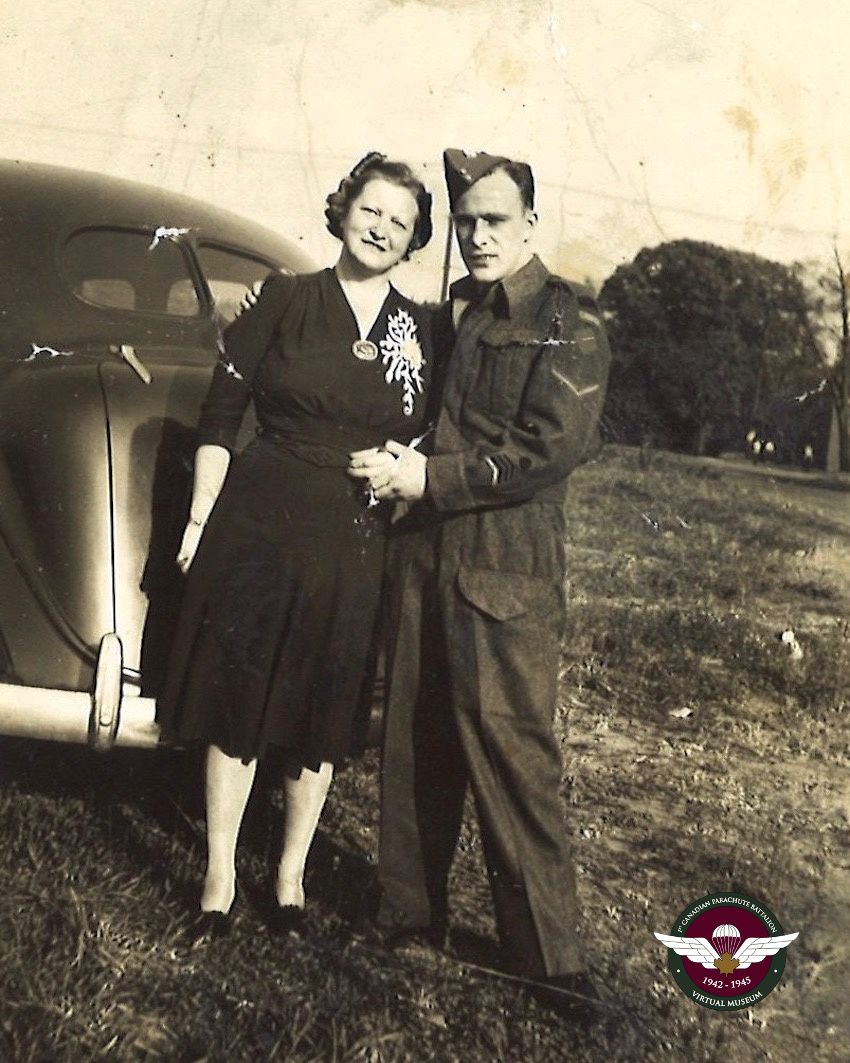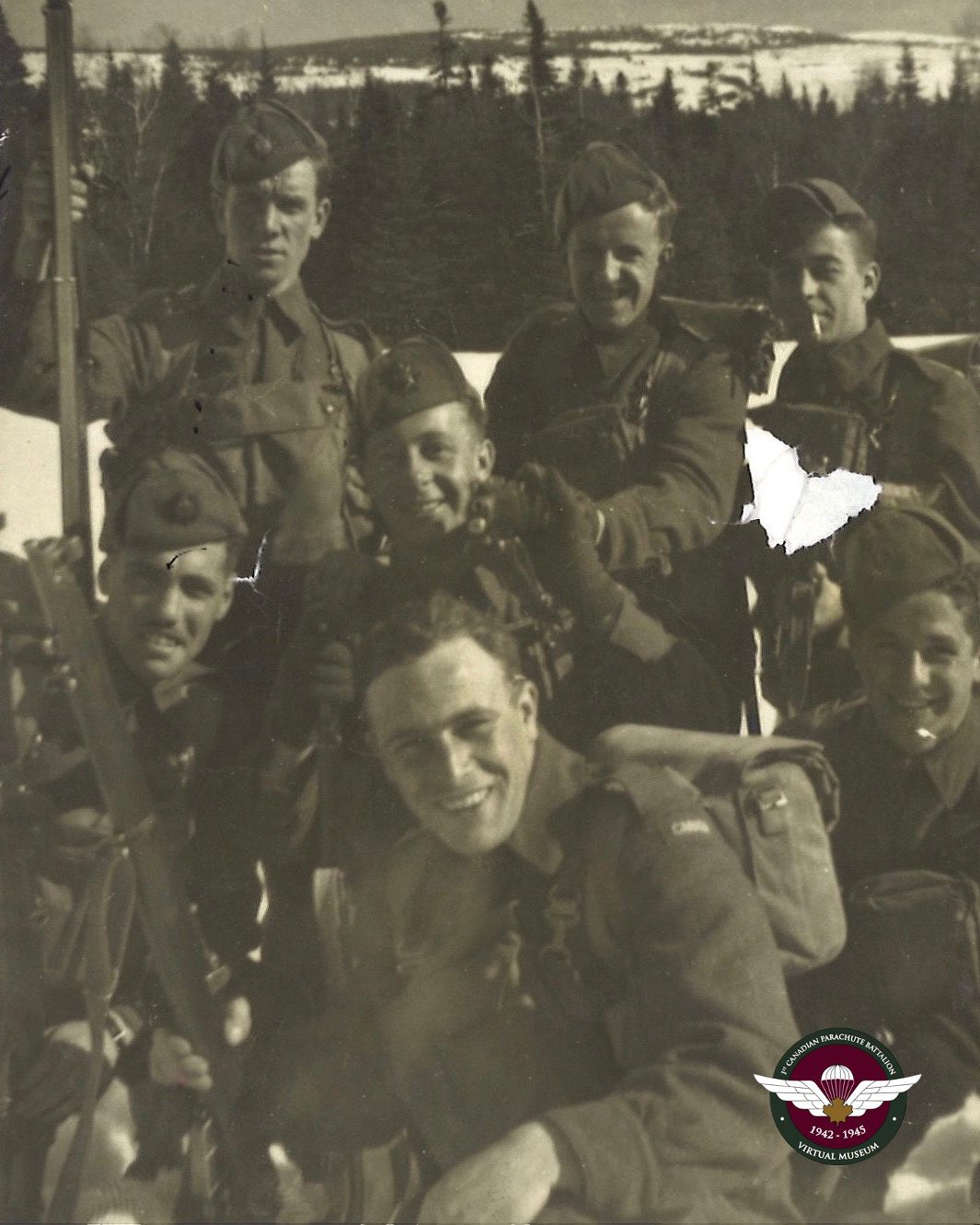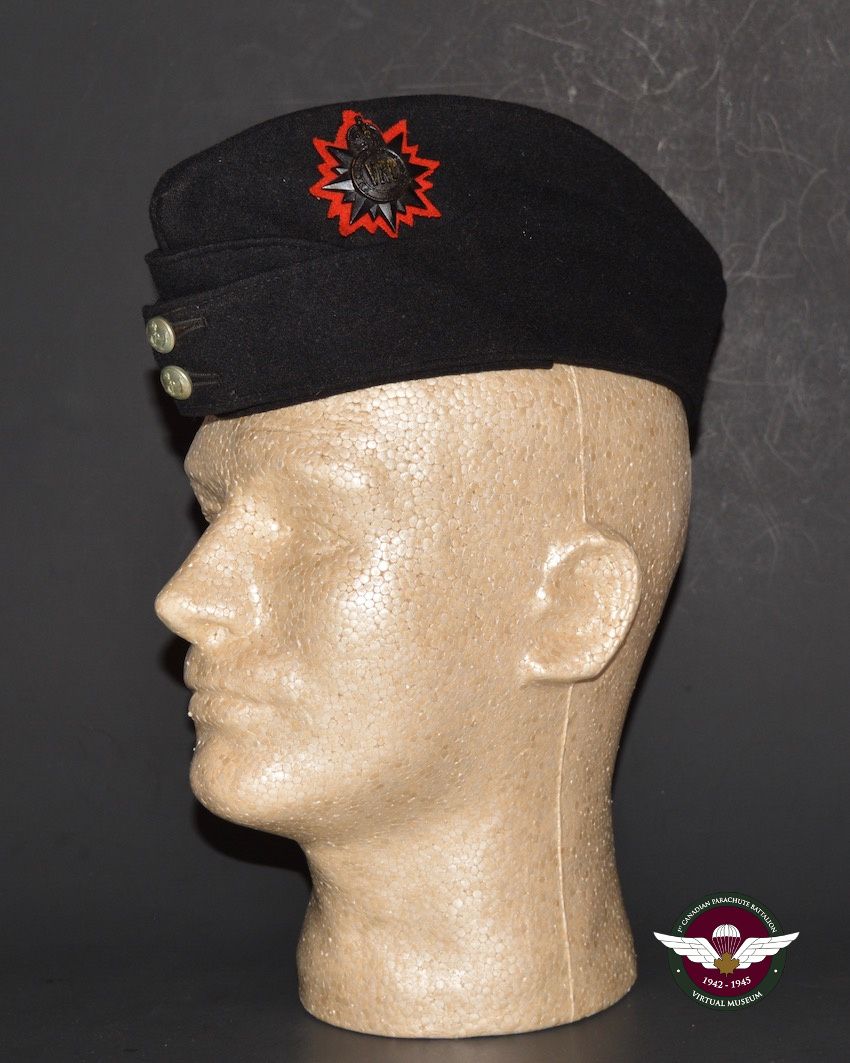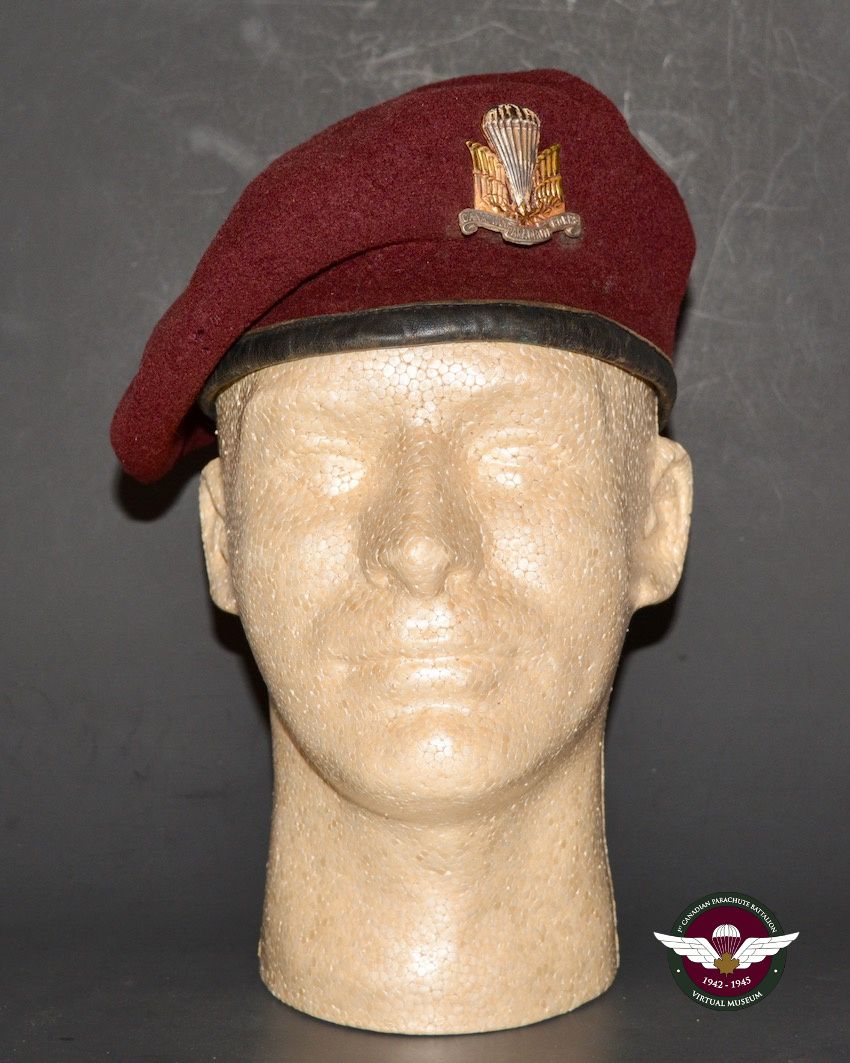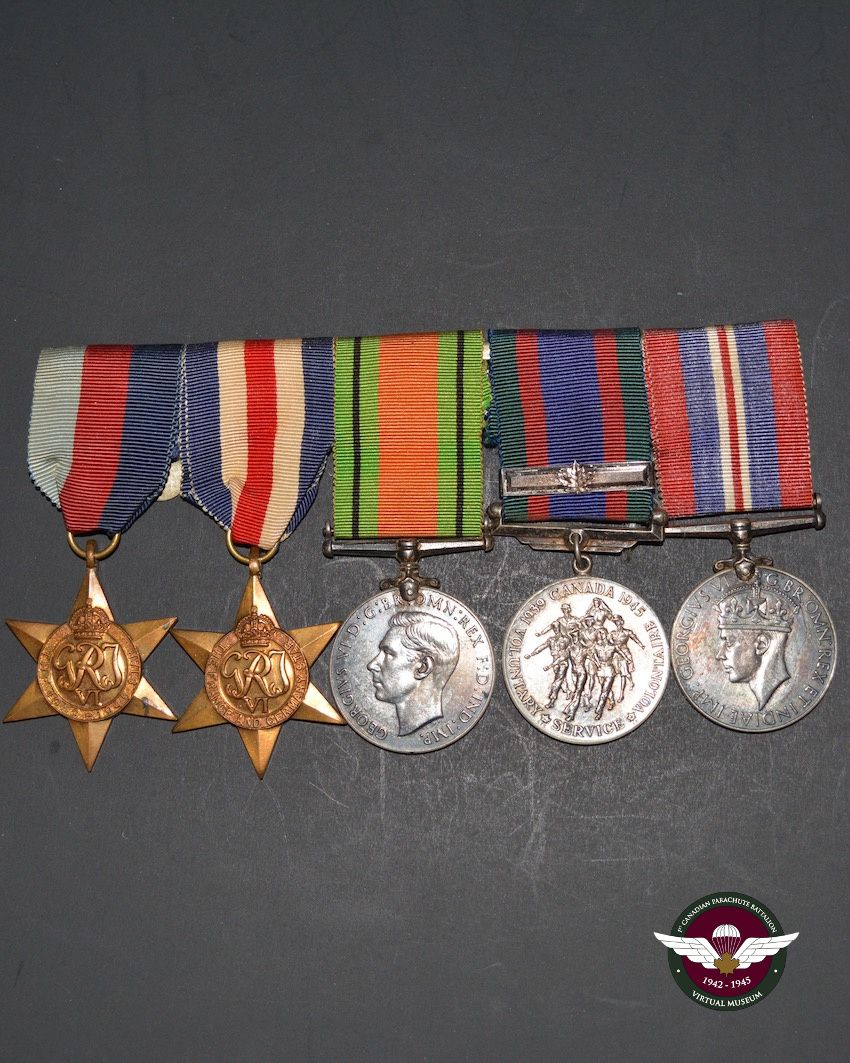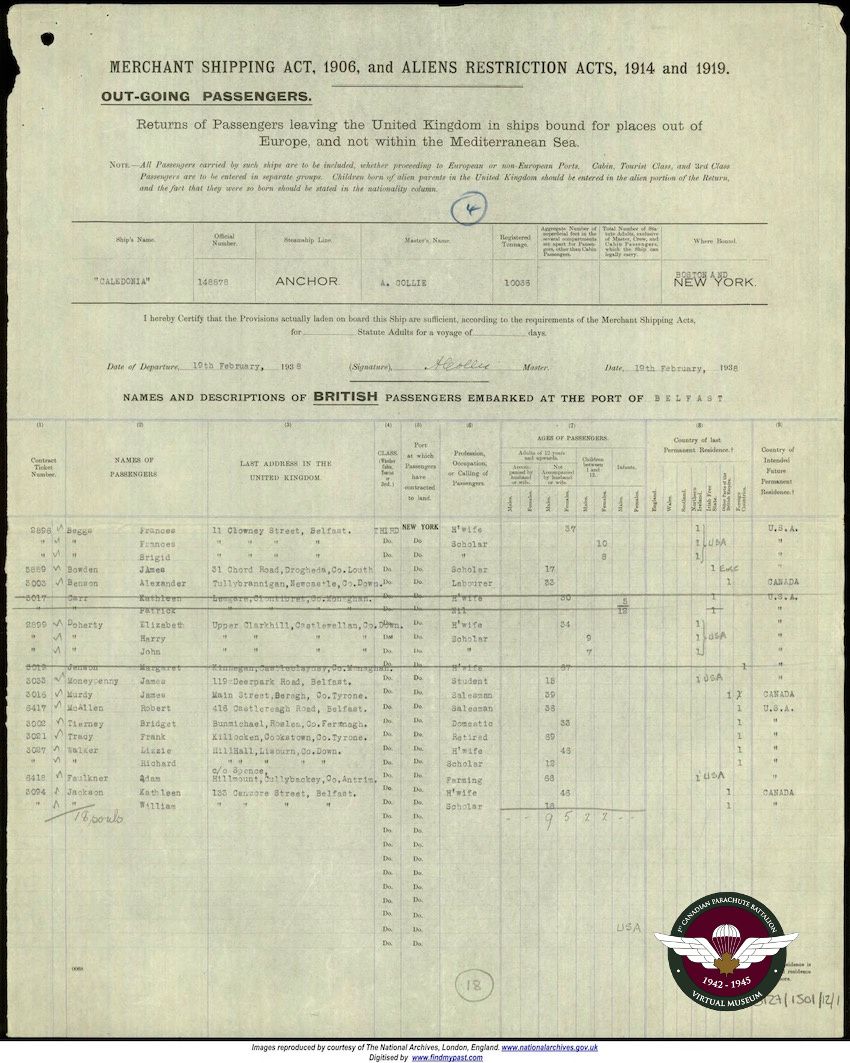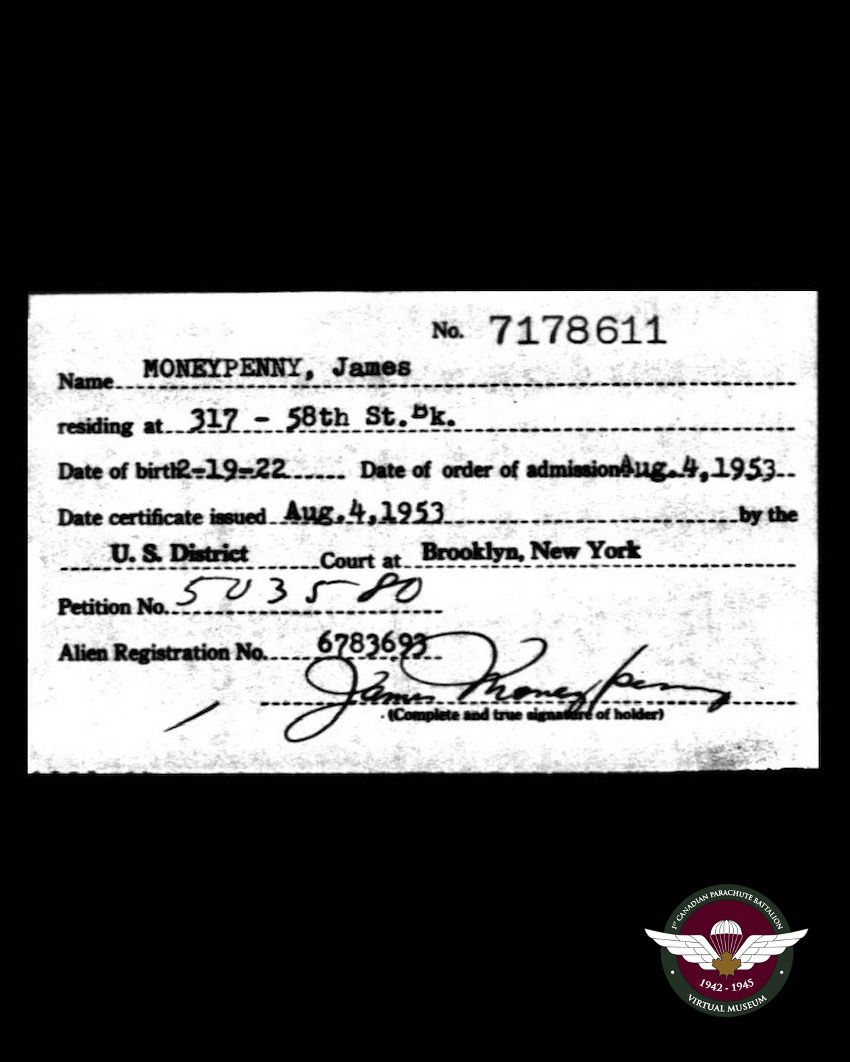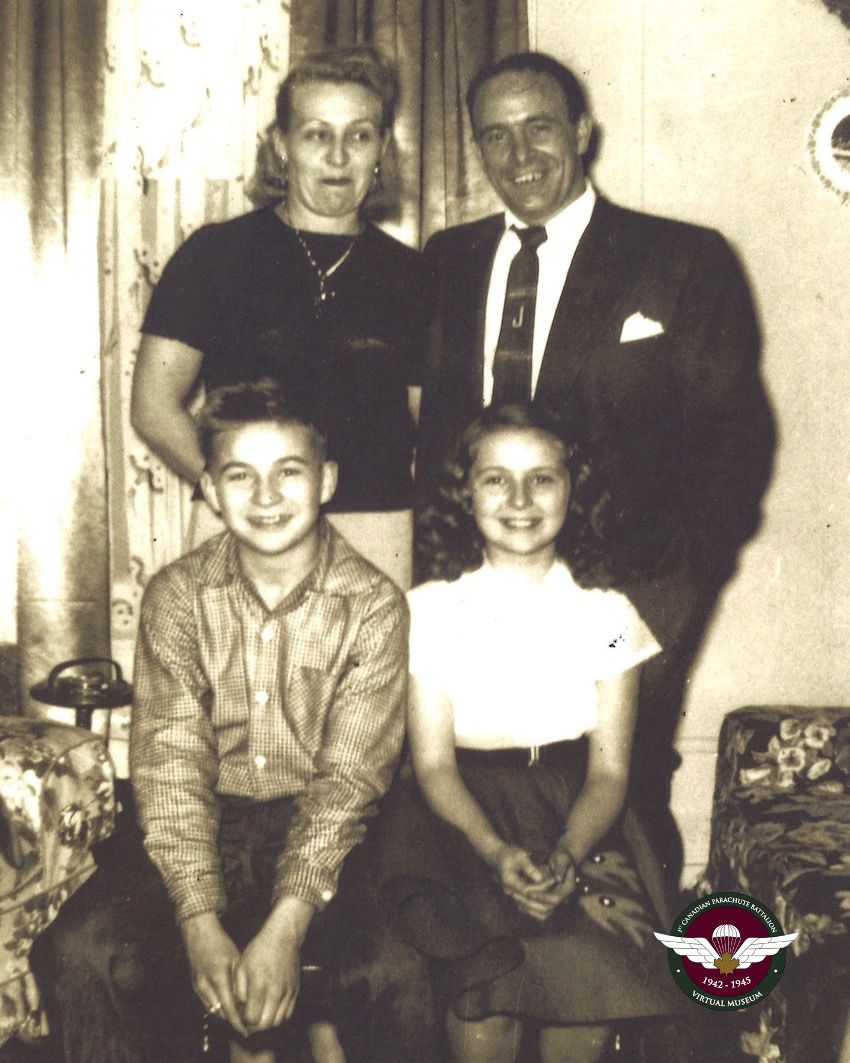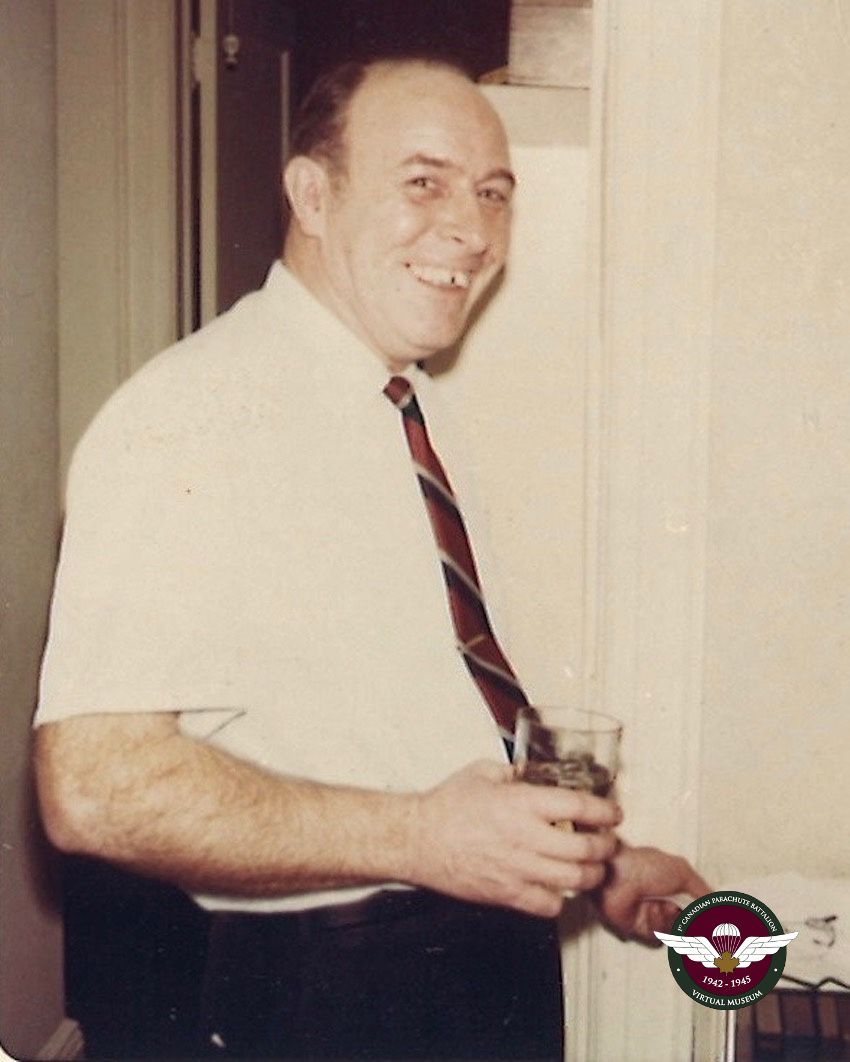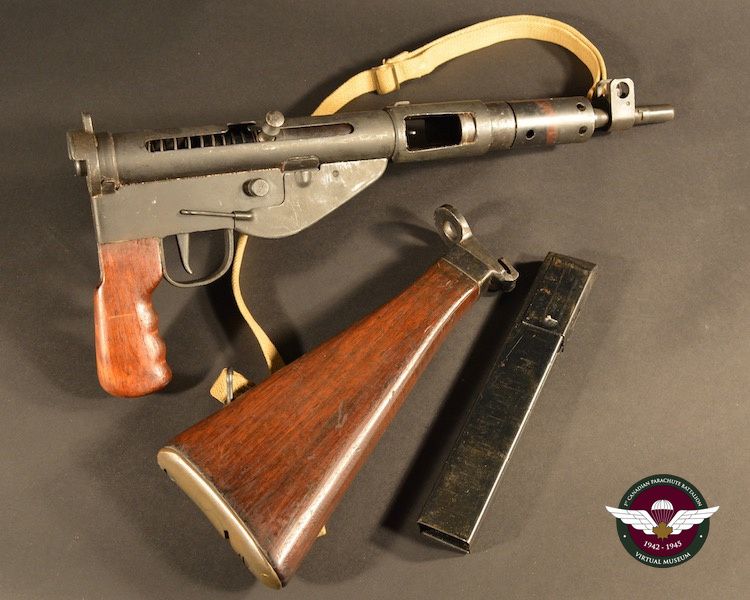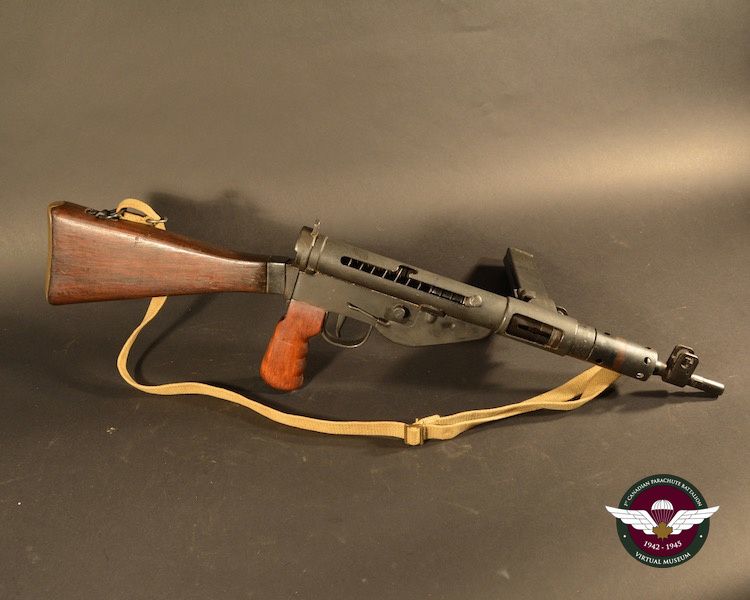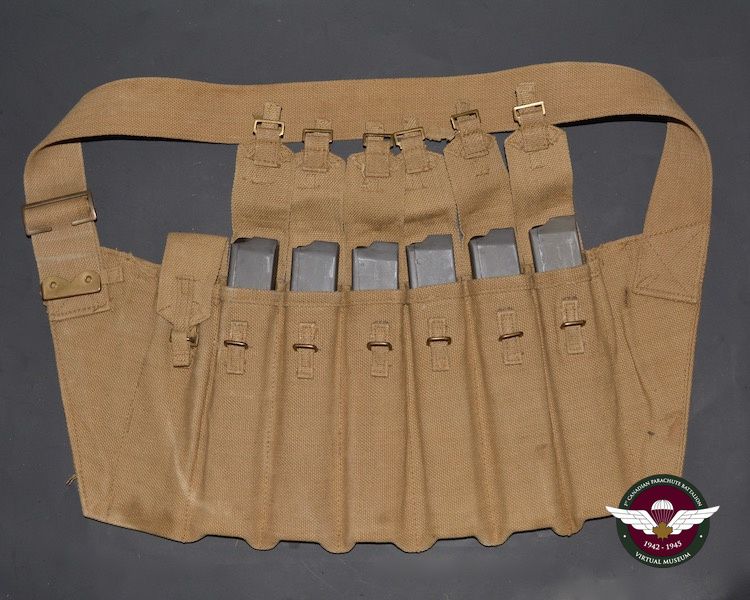L/Corporal James Moneypenny
James Moneypenny was the son of James Moneypenny Sr. and Annie Caldwell Moneypenny (nee Savage). He was born at Birkenhead, Cheshire, England on February 19, 1922. At the time of his birth, his family moved to Ireland, Birkenhead just across the Mersey River from Liverpool where his father worked in the shipyards as an electrician. On the 23 of January 1923, James' father accompanied his brothers John and William, who emigrated to the United States and settled in New York City arriving there on January 30. They took up jobs in the Brooklyn Navy Yard. James, aged four and his mother Annie followed on June 23.
Tragedy befell the family the following year, James' mother Annie died during childbirth of her second child. James lived with his father and his uncle William until March 1924 when he returned to Ireland to live with his grandmother in Belfast. James lived with her until February 1938 when he returned to New York at the age of fifteen.
Moneypenny enlisted with the Victoria Rifles of Canada in Montreal on August 2, 1940. Three months later Rifleman Moneypenny was posted to St. Johns Newfoundland. It was here that he was granted permission to marry Miss Clara Carter, with whom he exchanged vows on March 13, 1941. The following month he qualified as a Driver Class III (Wheel).
On August 25, 1941, Moneypenny was attached to Ordnance Depot "W" Force in St. John's. On February 14, 1943, he officially transferred to the Royal Canadian Ordnance Corps and was promoted to Acting L/Cpl. on September 22. While on strength with "W" Force, in early 1944 Moneypenny was briefly attached to Le Régiment de Joliette which was part of Pacific Command in St. John’s, as well as Le Régiment de Montmagny which was also garrisoned in Newfoundland.
Eager to see action overseas, Moneypenny requested a transfer to the 1st Canadian Parachute Battalion. His request was granted and on 23 June 1944, he arrived at A-35 Parachute Training Centre at Camp Shilo, Manitoba. It was the norm for soldiers transferred to the Battalion to revert in rank upon admission, and the now Pte. Moneypenny was happy to make this concession in order to join the ranks of the elite.
Moneypenny successfully completed his training and became a qualified Parachutist on September 6, 1944. He embarked to the UK and was initially attached to 1 Canadian General Reinforcement Unit before being transferred to 1 Canadian Parachute Training Company on 7 December.
Moneypenny finally had the opportunity to put his training into practice when he parachuted into Germany on March 24, 1945, during Operation Varsity. This was the largest airborne assault in history and helped secure a foothold across the Rhine River in Western Germany.
After the war ended Moneypenny was discharged from the military on January 22, 1946. For his service, he was awarded the France and Germany Star, the 1939-45 Star, the Canadian Volunteer Service Medal with Clasp, the Defence Medal and the War Medal 1939-45.
He returned to civilian life and eventually moved to the U.S. with his wife Clara to live out the remainder of his life.
Pictures and information courtesy of Bob Moneypenny & Gloria Moneypenny
Sten MkV
L/Cpl. Moneypenny would have carried a Sten submachine gun overseas, similar to this one shown below. The Sten can be found in several models, the one pictured here is a Sten MKV, produced for the Paratroopers. It was an inexpensive firearm to produce, costing less than $10.00 per unit. It chambered a 9mm cartridge with a firing rate of 550 rounds per minute and an effective range of 100 yards. Also shown is a magazine pouch or bandolier that allowed a soldier to carry an additional 30 round magazines. Courtesy of Collectors Source.
